Abstract
Three children, aged 1.5, 2.5, and 4.5 years, pressed telegraph keys under a two-component multiple random-ratio random-interval schedule of reinforcement. In the first condition, responses on the left key were reinforced under a random-interval schedule and responses on the right key were reinforced under a random-ratio schedule. In the second condition, the schedule components were reversed. In the third condition, the original arrangement was reinstated. For all subjects, rates of responding were higher in the random-ratio component despite higher rates of reinforcement in the random-interval component. The average interreinforcement interval of the random-interval component was increased in the fourth condition, resulting in more similar rates of reinforcement for both schedule components, and then returned to its original value in the fifth condition. In both conditions, all subjects continued to exhibit higher rates of responding in the ratio component than in the interval component. Although these observations are consistent with results from studies with pigeons, it is argued that the response-rate differences between the interval and ratio schedule components are sufficient to demonstrate schedule sensitivity.
Keywords: sensitivity to contingencies, schedule control, multiple schedule, random ratio, random interval, button press, children
Full text
PDF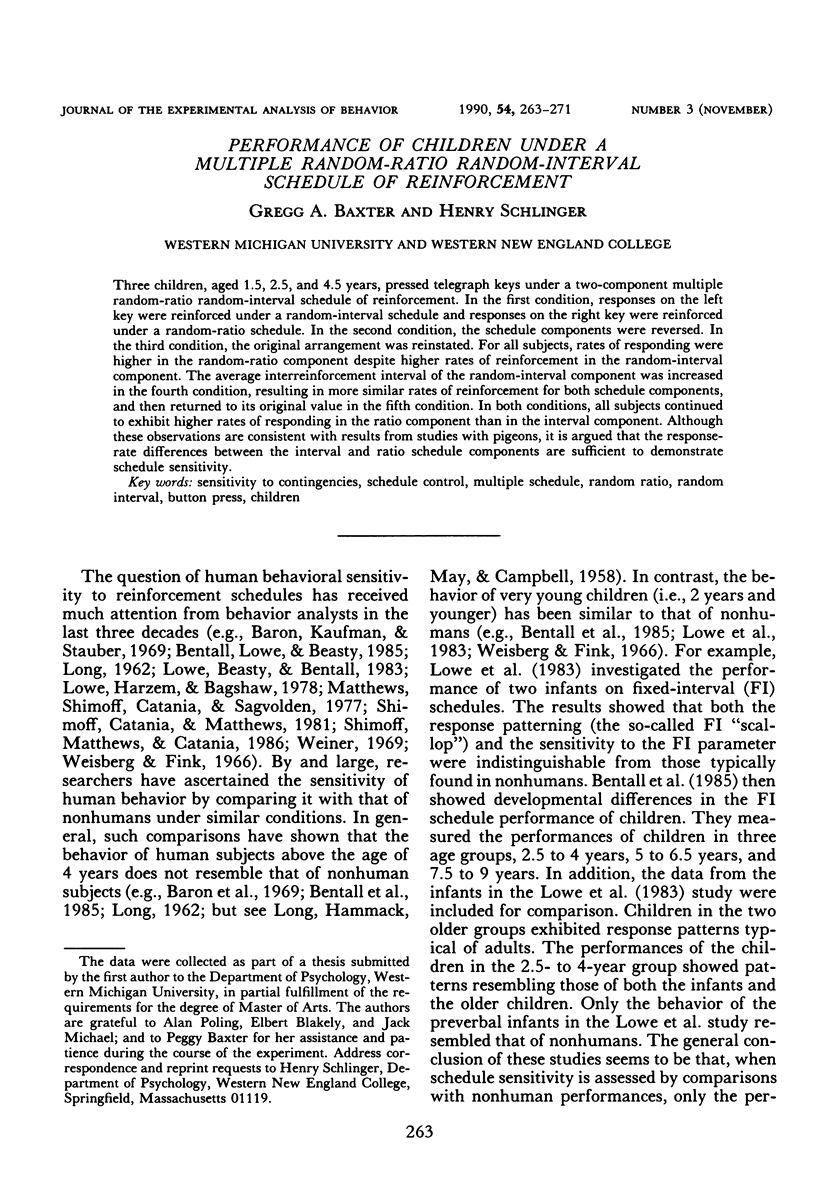
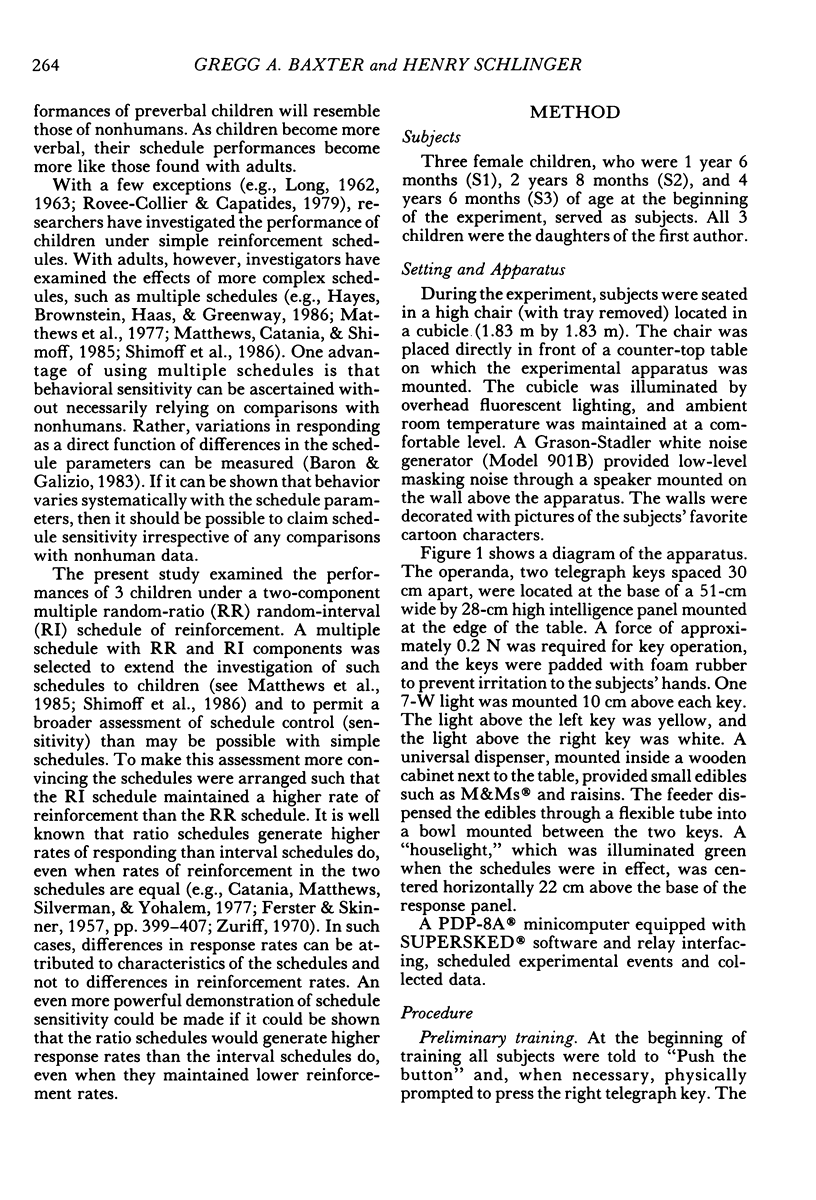
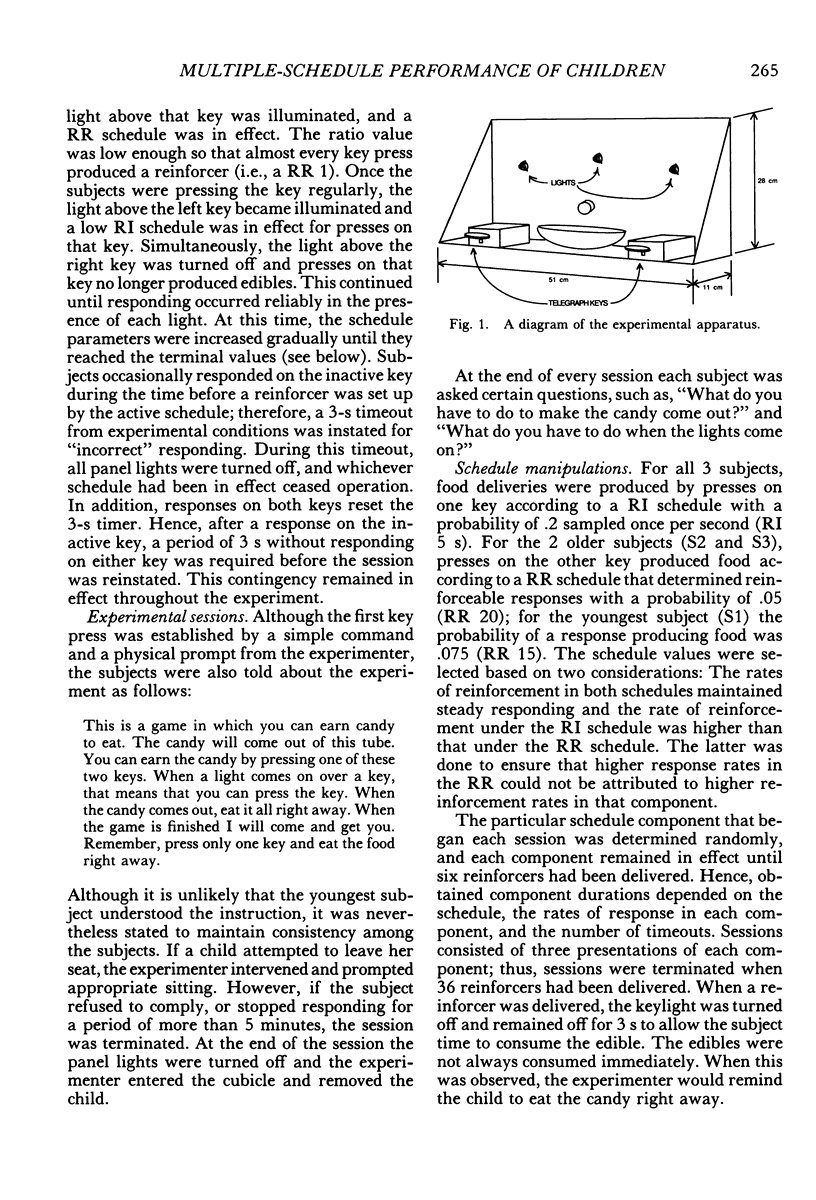
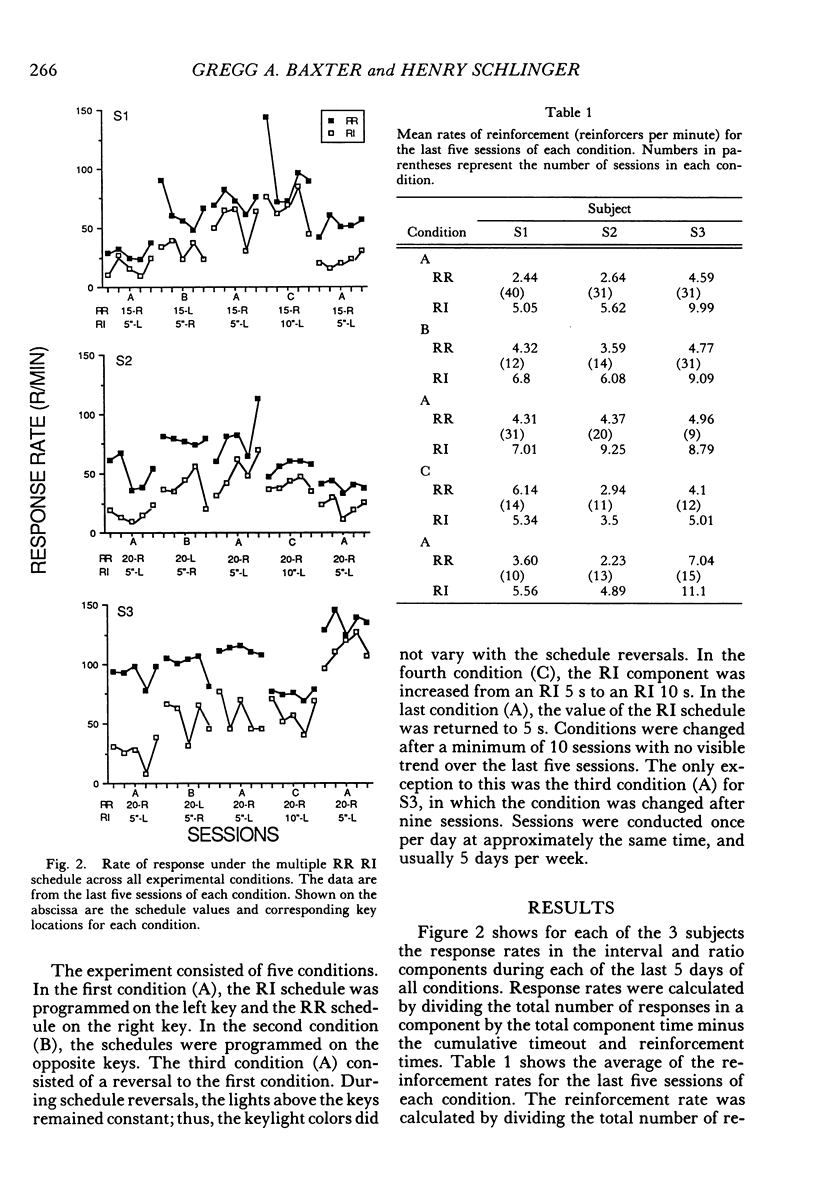
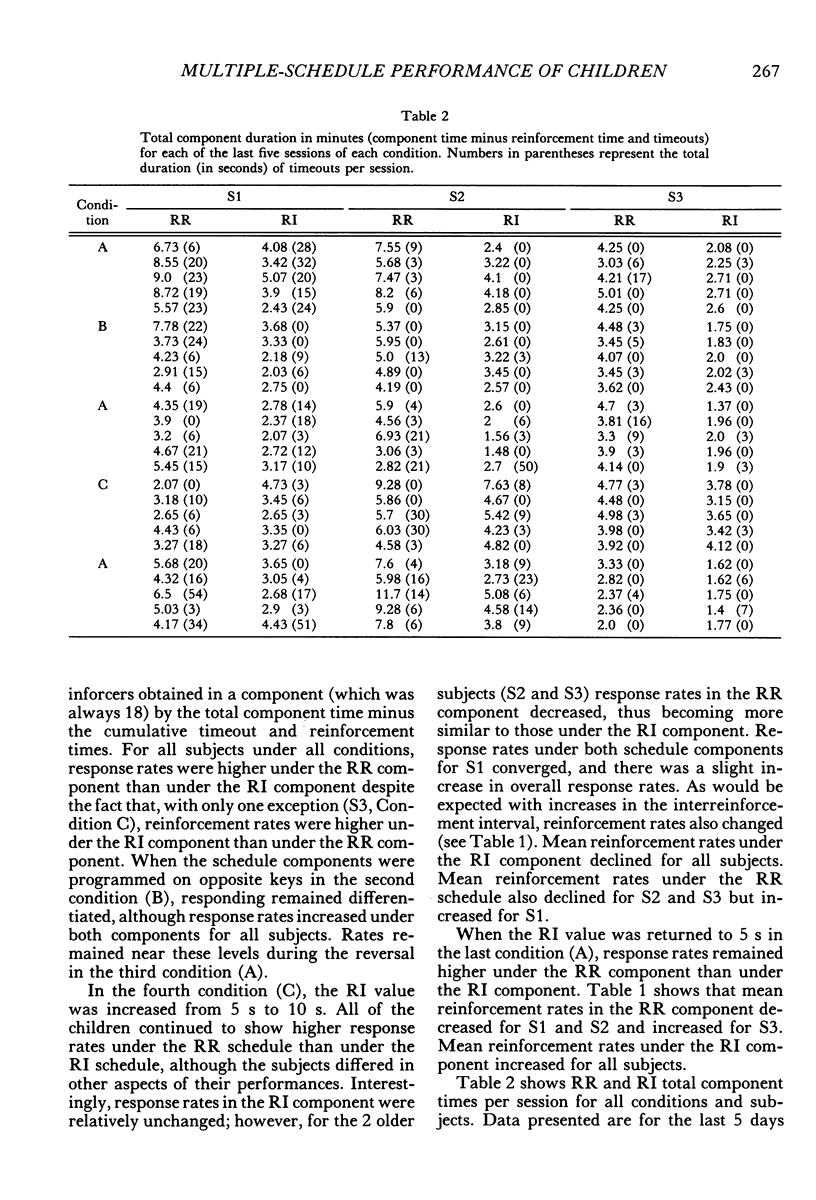
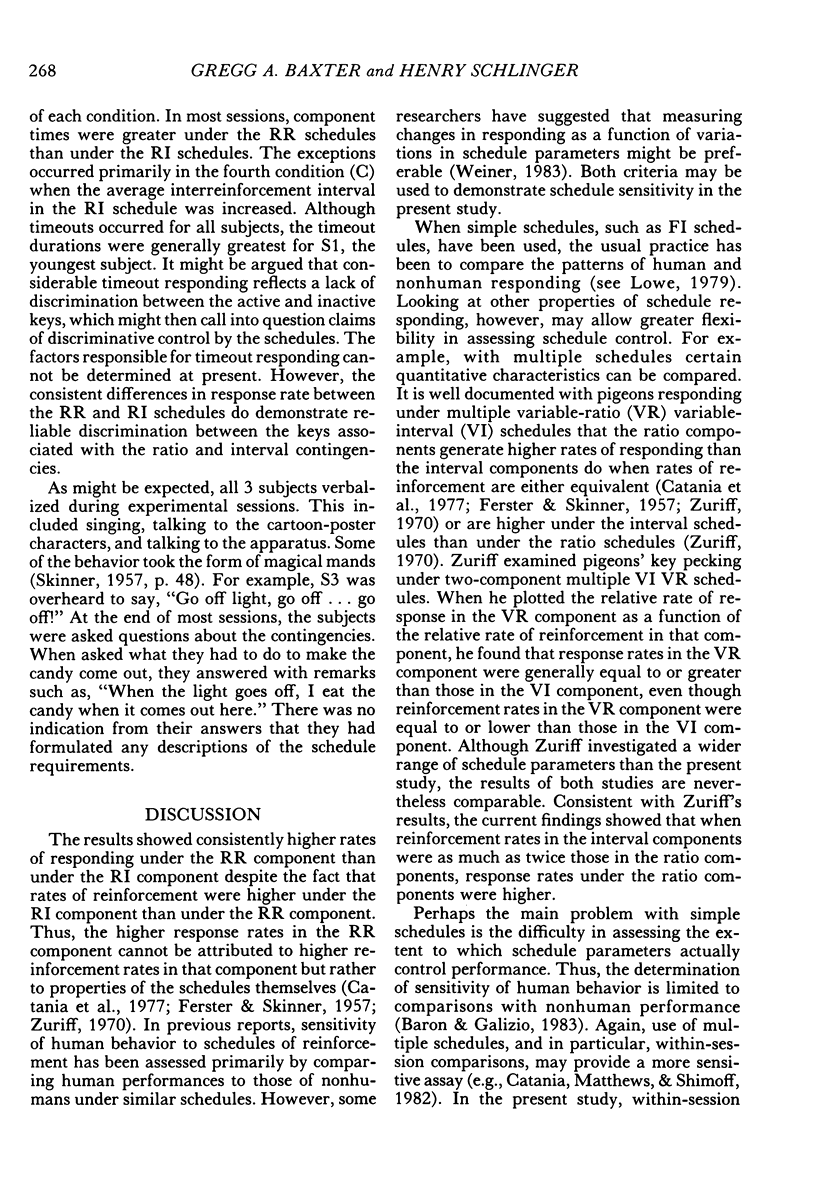

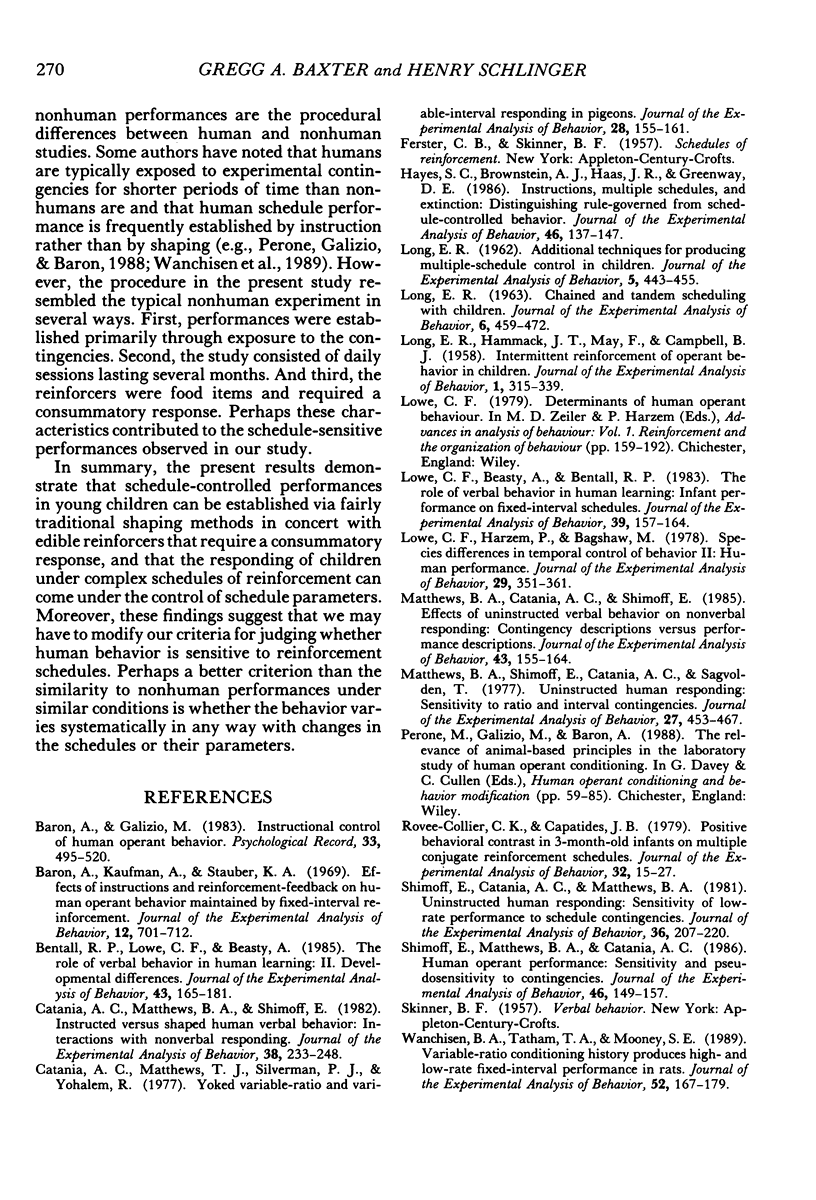
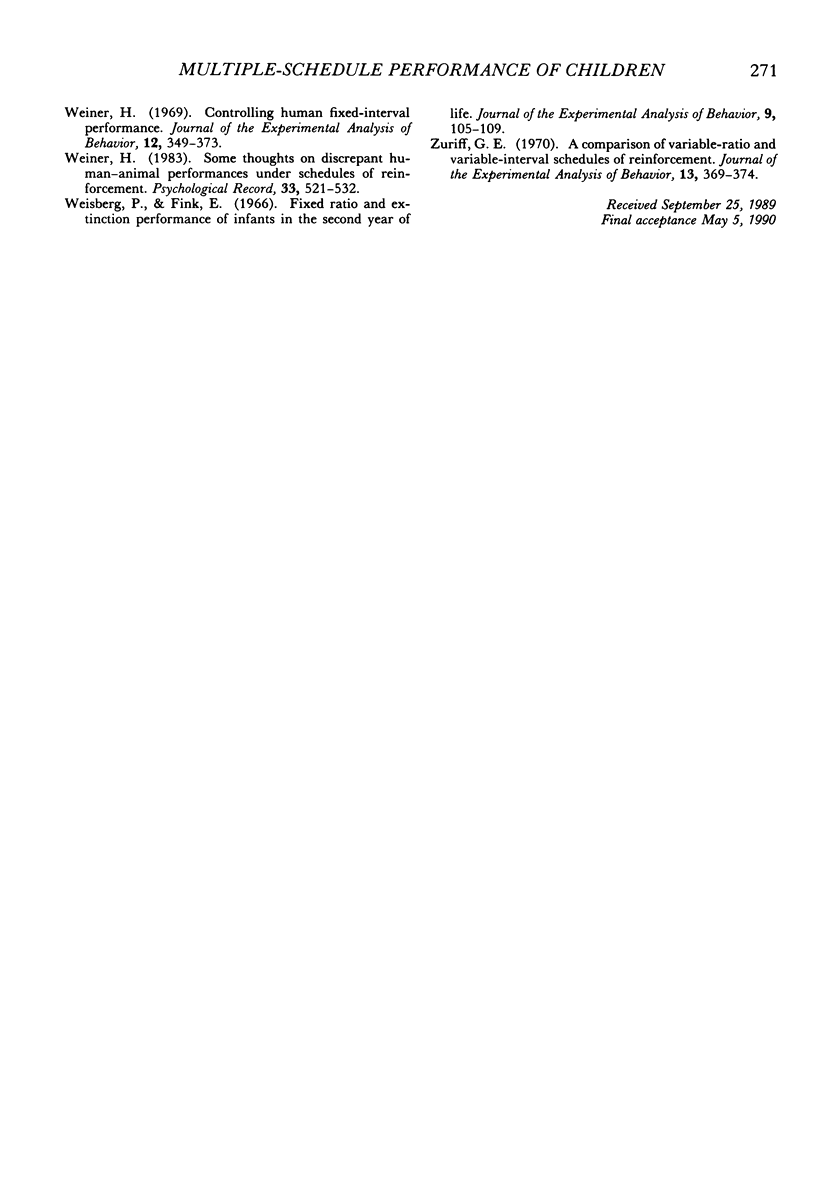
Selected References
These references are in PubMed. This may not be the complete list of references from this article.
- Baron A., Kaufman A., Stauber K. A. Effects of instructions and reinforcement-feedback on human operant behavior maintained by fixed-interval reinforcement. J Exp Anal Behav. 1969 Sep;12(5):701–712. doi: 10.1901/jeab.1969.12-701. [DOI] [PMC free article] [PubMed] [Google Scholar]
- Bentall R. P., Lowe C. F., Beasty A. The role of verbal behavior in human learning: II. Developmental differences. J Exp Anal Behav. 1985 Mar;43(2):165–181. doi: 10.1901/jeab.1985.43-165. [DOI] [PMC free article] [PubMed] [Google Scholar]
- Catania A. C., Matthews B. A., Shimoff E. Instructed versus shaped human verbal behavior: Interactions with nonverbal responding. J Exp Anal Behav. 1982 Nov;38(3):233–248. doi: 10.1901/jeab.1982.38-233. [DOI] [PMC free article] [PubMed] [Google Scholar]
- Catania A. C., Matthews T. J., Silverman P. J., Yohalem R. Yoked variable-ratio and variable-interval responding in pigeons. J Exp Anal Behav. 1977 Sep;28(2):155–161. doi: 10.1901/jeab.1977.28-155. [DOI] [PMC free article] [PubMed] [Google Scholar]
- Hayes S. C., Brownstein A. J., Haas J. R., Greenway D. E. Instructions, multiple schedules, and extinction: Distinguishing rule-governed from schedule-controlled behavior. J Exp Anal Behav. 1986 Sep;46(2):137–147. doi: 10.1901/jeab.1986.46-137. [DOI] [PMC free article] [PubMed] [Google Scholar]
- Long E. R. Additional techniques for producing multiple-schedule control in children. J Exp Anal Behav. 1962 Oct;5(4):443–455. doi: 10.1901/jeab.1962.5-443. [DOI] [PMC free article] [PubMed] [Google Scholar]
- Long E. R. Chained and tandem scheduling with children. J Exp Anal Behav. 1963 Jul;6(3):459–472. doi: 10.1901/jeab.1963.6-459. [DOI] [PMC free article] [PubMed] [Google Scholar]
- Long E. R., Hammack J. T., May F., Campbell B. J. Intermittent reinforcement of operant behavior in children. J Exp Anal Behav. 1958 Oct;1(4):315–339. doi: 10.1901/jeab.1958.1-315. [DOI] [PMC free article] [PubMed] [Google Scholar]
- Lowe C. F., Beasty A., Bentall R. P. The role of verbal behavior in human learning: infant performance on fixed-interval schedules. J Exp Anal Behav. 1983 Jan;39(1):157–164. doi: 10.1901/jeab.1983.39-157. [DOI] [PMC free article] [PubMed] [Google Scholar]
- Lowe C. F., Harzem P., Bagshaw M. Species differences in temporal control of behavior II: human performance. J Exp Anal Behav. 1978 May;29(3):351–361. doi: 10.1901/jeab.1978.29-351. [DOI] [PMC free article] [PubMed] [Google Scholar]
- Matthews B. A., Catania A. C., Shimoff E. Effects of uninstructed verbal behavior on nonverbal responding: Contingency descriptions versus performance descriptions. J Exp Anal Behav. 1985 Mar;43(2):155–164. doi: 10.1901/jeab.1985.43-155. [DOI] [PMC free article] [PubMed] [Google Scholar]
- Matthews B. A., Shimoff E., Catania A. C., Sagvolden T. Uninstructed human responding: sensitivity to ratio and interval contingencies. J Exp Anal Behav. 1977 May;27(3):453–467. doi: 10.1901/jeab.1977.27-453. [DOI] [PMC free article] [PubMed] [Google Scholar]
- Rovee-Collier C. K., Capatides J. B. Positive behavioral contrast in 3-month-old infants on multiple conjugate reinforcement schedules. J Exp Anal Behav. 1979 Jul;32(1):15–27. doi: 10.1901/jeab.1979.32-15. [DOI] [PMC free article] [PubMed] [Google Scholar]
- Shimoff E., Catania A. C., Matthews B. A. Uninstructed human responding: Sensitivity of low-rate performance to schedule contingencies. J Exp Anal Behav. 1981 Sep;36(2):207–220. doi: 10.1901/jeab.1981.36-207. [DOI] [PMC free article] [PubMed] [Google Scholar]
- Shimoff E., Matthews B. A., Catania A. C. Human operant performance: Sensitivity and pseudosensitivity to contingencies. J Exp Anal Behav. 1986 Sep;46(2):149–157. doi: 10.1901/jeab.1986.46-149. [DOI] [PMC free article] [PubMed] [Google Scholar]
- Wanchisen B. A., Tatham T. A., Mooney S. E. Variable-ratio conditioning history produces high- and low-rate fixed-interval performance in rats. J Exp Anal Behav. 1989 Sep;52(2):167–179. doi: 10.1901/jeab.1989.52-167. [DOI] [PMC free article] [PubMed] [Google Scholar]
- Weiner H. Controlling human fixed-interval performance. J Exp Anal Behav. 1969 May;12(3):349–373. doi: 10.1901/jeab.1969.12-349. [DOI] [PMC free article] [PubMed] [Google Scholar]
- Weisberg P., Fink E. Fixed ratio and extinction performance of infants in the second year of life. J Exp Anal Behav. 1966 Mar;9(2):105–109. doi: 10.1901/jeab.1966.9-105. [DOI] [PMC free article] [PubMed] [Google Scholar]
- Zuriff G. E. A comparison of variable-ratio and variable-interval schedules of reinforcement. J Exp Anal Behav. 1970 May;13(3):369–374. doi: 10.1901/jeab.1970.13-369. [DOI] [PMC free article] [PubMed] [Google Scholar]


